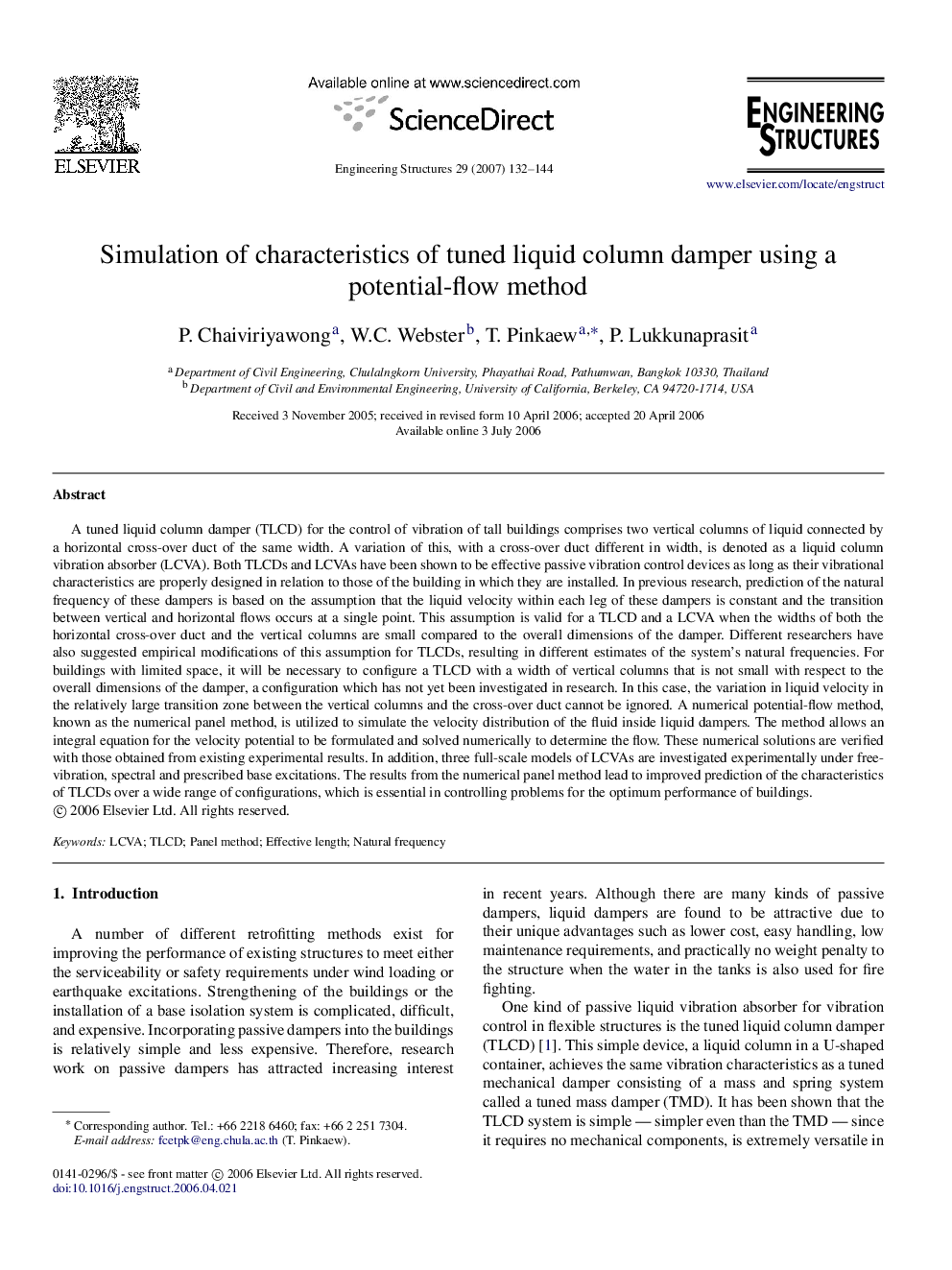| کد مقاله | کد نشریه | سال انتشار | مقاله انگلیسی | نسخه تمام متن |
|---|---|---|---|---|
| 269583 | 504489 | 2007 | 13 صفحه PDF | دانلود رایگان |

A tuned liquid column damper (TLCD) for the control of vibration of tall buildings comprises two vertical columns of liquid connected by a horizontal cross-over duct of the same width. A variation of this, with a cross-over duct different in width, is denoted as a liquid column vibration absorber (LCVA). Both TLCDs and LCVAs have been shown to be effective passive vibration control devices as long as their vibrational characteristics are properly designed in relation to those of the building in which they are installed. In previous research, prediction of the natural frequency of these dampers is based on the assumption that the liquid velocity within each leg of these dampers is constant and the transition between vertical and horizontal flows occurs at a single point. This assumption is valid for a TLCD and a LCVA when the widths of both the horizontal cross-over duct and the vertical columns are small compared to the overall dimensions of the damper. Different researchers have also suggested empirical modifications of this assumption for TLCDs, resulting in different estimates of the system’s natural frequencies. For buildings with limited space, it will be necessary to configure a TLCD with a width of vertical columns that is not small with respect to the overall dimensions of the damper, a configuration which has not yet been investigated in research. In this case, the variation in liquid velocity in the relatively large transition zone between the vertical columns and the cross-over duct cannot be ignored. A numerical potential-flow method, known as the numerical panel method, is utilized to simulate the velocity distribution of the fluid inside liquid dampers. The method allows an integral equation for the velocity potential to be formulated and solved numerically to determine the flow. These numerical solutions are verified with those obtained from existing experimental results. In addition, three full-scale models of LCVAs are investigated experimentally under free-vibration, spectral and prescribed base excitations. The results from the numerical panel method lead to improved prediction of the characteristics of TLCDs over a wide range of configurations, which is essential in controlling problems for the optimum performance of buildings.
Journal: Engineering Structures - Volume 29, Issue 1, January 2007, Pages 132–144